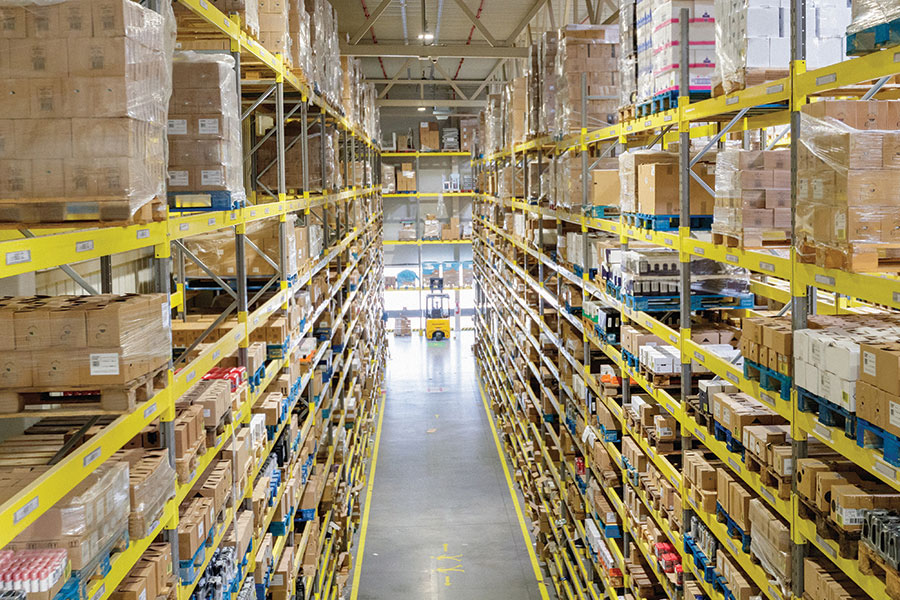JLL’s industrial real estate report: Q3 trends point to record-setting 2021
More than 137.9 million square-feet (MSF) of industrial product was leased, a new 2021 high, according to data recently issued by Los Angeles-based industrial real estate firm JLL, in its “Q3 Industrial Report."

Data recently issued by Los Angeles-based industrial real estate firm JLL, in its “Q3 Industrial Report,” JLL continue to point to how market conditions are ostensibly leading to a record-breaking year in 2021.
“As a global economy with substantial reliance on goods being manufactured abroad, and shipping them to distant places, pressure on critical supply hubs this quarter made the supply chain a hot topic,” the report observed. “Industries that are reliant on getting goods from critical supply chain nodes, like the ports, saw a spike in demand and are expected to continue to see an increase with the holiday season right around the corner. Demand continues to outpace supply with the lack of available space contributing to rents being driven up and vacancy hitting record lows. As the economy pushed forward and tenants took occupancy of their industrial space, net absorption soared in Q3 and is expected to hit an all-time high by the end of the year.”
For the third quarter, JLL reported the following industrial real estate metrics, for the third quarter:
• more than 137.9 million square-feet (MSF) of industrial product was leased, a new 2021 high;
• U.S. industrial rents rose to $6.76 per square-foot, and going back to the third quarter of 2020, rents have cumulatively risen by 7.1%;
• net absorption hit its highest level on record, at 135.1 MSF absorbed;
• vacancy dropped to a new record low, for the industrial market, at 4.3%; and
• the market delivered 85 million square-feet of industrial space in the third quarter, with 69.6% already pre-leased.
JLL Senior Director Mehtab Randhawa wrote in the report that as a global economy with substantial reliance on goods being manufactured abroad, and shipping them to distant places, pressure on critical supply hubs in the third quarter made the supply chain a hot topic.
“Industries that are reliant on getting goods from critical supply chain nodes, like the ports, saw a spike in demand and are expected to continue to see an increase with the holiday season right around the corner,” she observed. “Demand continues to outpace supply with the lack of available space contributing to rents being driven up and vacancy hitting record lows. As the economy pushed forward and tenants took occupancy of their industrial space, net absorption soared in Q3 and is expected to hit an all-time high by the end of the year.”
Looking ahead, JLL said that it anticipates continued demand from industries that back supply chain operations. And it explained that logistics and distribution and 3PL will be at the forefront, especially with the holiday season and impending impacts from the cargo ships backup logs observed at the close of the quarter.
“Labor and driver shortages have pushed companies to explore automated systems and robotics to assist with distribution and transportation operations,” it said. “Given strong fundamentals presented this year, the industrial market is well positioned to surpass 2020 totals and break new records. Forthcoming trends to be on the lookout for include the historical uptick in demand during the holiday season, and construction delays in the winter, as weather-related issues arise and push deliveries out. With demand for industrial space showing no signs of slowing down new inventory will be needed to bring supply and demand closer to equilibrium and negate a future shortage of industrial space.”
Rich Thompson, International Director, JLL Supply Chain & Logistics Solutions, said in a recent interview that in regards to the “sweet spot” of industrial real estate, which primarily includes distribution centers, plants, and warehouses, that the market is currently seeing the lowest vacancy rates in the market’s history.
“That means there is [very little] available space to lease anymore,” he said. “Vacancy rates are running 3%-to-4%, and it is super-tight in the bigger and the tighter markets like the Inland Empire outside the Port of Los Angeles and the Port of Long Beach, the Port of New York/New Jersey, and other markets that are extremely tight.”
Thompson said the current market environment has created challenges for companies to try to identify and take down needed distribution space in critical markets, adding that it is now becoming a much more strategic issue for companies.
“It used to be ‘let’s figure out where we need to be and go get the real estate,’ and that was considered an easy to do-type thing,” he said. “Today, they could get boxed out if they are not careful.”

Article Topics
JLL News & Resources
Q1 industrial real estate activity sees continuation of strong market conditions, states JLL JLL research highlights the supply and demand imbalance for industrial real estate space JLL’s industrial real estate report: Q3 trends point to record-setting 2021 JLL report: Strong Q1 for U.S. industrial real estate market Report: E-commerce and last mile demands drive industrial real estate leasing growth in Q3 JLL research: ‘Mega box’ leasing deal activity remains strong JLL report explores concept of industrial ‘Human Centric Design’ More JLLLatest in Materials Handling
Registration open for Pack Expo International 2024 Walmart chooses Swisslog AS/RS and software for third milk processing facility NetLogistik partners with Vuzix subsidiary Moviynt to offer mobility solutions for warehouses Materials Handling Robotics: The new world of heterogeneous robotic integration BSLBATT is looking for new distributors and resellers worldwide Lucas Watson appointed CSO for Körber’s Parcel Logistics business in North America Hyster recognizes Dealers of Distinction for 2023 More Materials HandlingAbout the Author
Subscribe to Materials Handling Magazine

Find out what the world's most innovative companies are doing to improve productivity in their plants and distribution centers.
Start your FREE subscription today.
April 2024 Modern Materials Handling

Latest Resources










